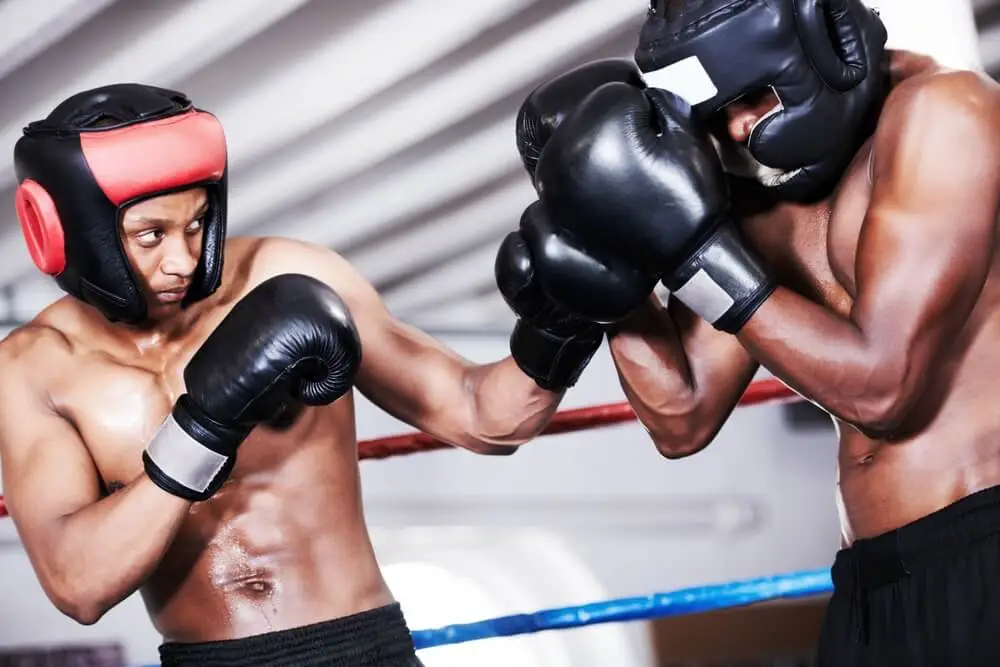Why is Headgear Used in Boxing? – Understanding Its Importance and Types

Boxing, one of the oldest and most physically demanding sports, has a rich history that dates back thousands of years. Originating as a brutal contest of strength and endurance, it has evolved into a regulated sport with specific rules and safety measures. While the goal remains to outmaneuver and outpunch an opponent, modern boxing strongly emphasizes its athletes’ safety. Headgear stands out as a crucial piece of equipment among the various protective gear used in the sport.
Headgear in boxing is designed to protect fighters from head injuries, which can occur even with the most experienced boxers. As the sport has progressed, so too has the understanding of the importance of minimizing the risk of brain injuries, concussions, and other trauma. This article will delve into the reasons why headgear is used in boxing, highlighting its role in ensuring the safety of the athletes while allowing them to compete at their best.
The Purpose of Headgear
The primary purpose of headgear in boxing is to protect fighters from head injuries, which are a significant concern in a sport that involves repeated impacts to the head. Boxing headgear is designed to cushion the blows and reduce the force of punches, thereby minimizing the risk of concussions, cuts, and other forms of trauma. While headgear cannot entirely eliminate the possibility of injury, it plays a crucial role in reducing the severity of potential damage.
Boxing headgear is engineered to protect specific areas of the head that are most vulnerable during a fight. The forehead, one of the most common targets for punches, is padded to absorb impacts and prevent cuts. The temples, another sensitive area, are also well-protected to reduce the likelihood of serious injury. Additionally, the back of the head, which can be susceptible to accidental blows, is safeguarded to prevent potentially dangerous impacts to the brainstem.
When compared to other sports that utilize headgear, such as football and hockey, boxing headgear serves a similar protective function but with a focus on the unique risks of the sport. In football, helmets are designed to protect against high-speed collisions and head-to-head contact, while in hockey, helmets shield players from pucks, sticks, and collisions with other players. In contrast, boxing headgear is specifically designed to absorb and disperse the force of punches, providing targeted protection where it’s needed most during a bout. While the designs and materials may differ, the underlying purpose across these sports remains the same: to protect athletes from head injuries and ensure their safety while they compete.
Types of Headgear
Boxing headgear comes in various styles, each offering different levels of protection and visibility, tailored to the needs of the fighter. The choice of headgear often depends on the fighter’s experience level, the type of competition, and personal preference.
1. Open-Face Headgear:
Open-face headgear is a popular choice among more experienced boxers who prioritize visibility and mobility. This style of headgear leaves the face mostly exposed, with padding around the forehead, temples, and sides of the head. The open-face design allows for better peripheral vision, which is crucial for defense and counterattacks in the ring. However, because the face is less protected, this type of headgear provides minimal protection against direct hits to the nose, eyes, and mouth.
2. Closed-Face Headgear:
Closed-face headgear offers more comprehensive protection by covering the entire face, including the chin and cheeks. This type of headgear often features a full-face shield or a padded bar across the face, which helps absorb the impact of punches to the nose and mouth. While closed-face headgear provides enhanced protection, it can slightly restrict vision and breathing, making it a better option for training rather than competitive bouts. Fighters who are focused on avoiding facial injuries or are in the early stages of their boxing journey may prefer this style for its added safety.
3. Amateur vs. Professional Headgear:
There is also a distinction between amateur and professional headgear in boxing. Amateur headgear is typically more padded, offering greater protection, as the focus is on safety and developing skills rather than taking heavy blows. This type of headgear is often mandatory in amateur competitions, where the primary goal is to reduce the risk of injury for less experienced fighters. Professional headgear, on the other hand, is often more streamlined and less padded, as professional boxers rely on their experience and defensive skills to avoid serious injury. In many professional bouts, especially at the highest levels, headgear is not used at all, as the sport’s rules and regulations evolve to emphasize the authenticity and intensity of the competition. However, when used, professional headgear is designed to balance protection with the need for visibility and agility, allowing fighters to perform at their peak.
The Debate on Headgear
The use of headgear in boxing has sparked considerable debate within the sport, with strong arguments both for and against its use. While headgear is widely recognized as a key piece of protective equipment, opinions vary on its overall effectiveness and impact on the sport.
Arguments for Using Headgear:
- Reduced risk of head injuries: Proponents argue that headgear is essential for minimizing the risk of head injuries, particularly in amateur boxing and training sessions. It provides a layer of protection against cuts, bruises, and the impact of punches.
- Prevention of long-term damage: Headgear can help prevent long-term damage from repeated blows to the head, which is a major concern in a sport like boxing where the risk of concussions is high.
- Enhanced safety: Supporters believe that headgear enhances the safety of the sport, making it more accessible and reducing the likelihood of serious injuries that could end a boxer’s career prematurely.
Arguments Against Using Headgear:
- False sense of security: Critics argue that headgear can create a false sense of security, leading fighters to take more risks and absorb more punches.
- Increased surface area: There is concern that headgear may increase the surface area of the head, potentially making it easier for opponents to land clean punches.
- Restricted vision: Headgear can restrict vision, making it harder for fighters to see and avoid incoming punches, which could increase the risk of injury.
- Limited effectiveness in preventing concussions: Studies suggest that while headgear may reduce superficial injuries like cuts and bruises, it does not significantly reduce the risk of concussions, which occur when the brain moves within the skull upon impact.
The Role of Headgear in Preventing Concussions
A recent study published in the Journal of Athletic Training (2023) found that while headgear may not significantly reduce the incidence of concussions, it can help mitigate the severity of head impacts. The study analyzed data from amateur boxers and found that those wearing headgear experienced fewer severe concussions compared to those without headgear. However, the study also noted that the use of headgear alone is not sufficient to prevent all concussions.
Conclusion
Headgear plays a vital role in boxing, offering protection against head injuries by safeguarding critical areas like the forehead, temples, and back of the head. While the debate around its effectiveness continues, headgear remains an essential tool for enhancing safety, particularly for amateur fighters. Choosing the right headgear and maintaining it properly are crucial steps in ensuring your safety in the ring. Always research thoroughly to find headgear that fits well, meets safety standards, and suits your needs.

